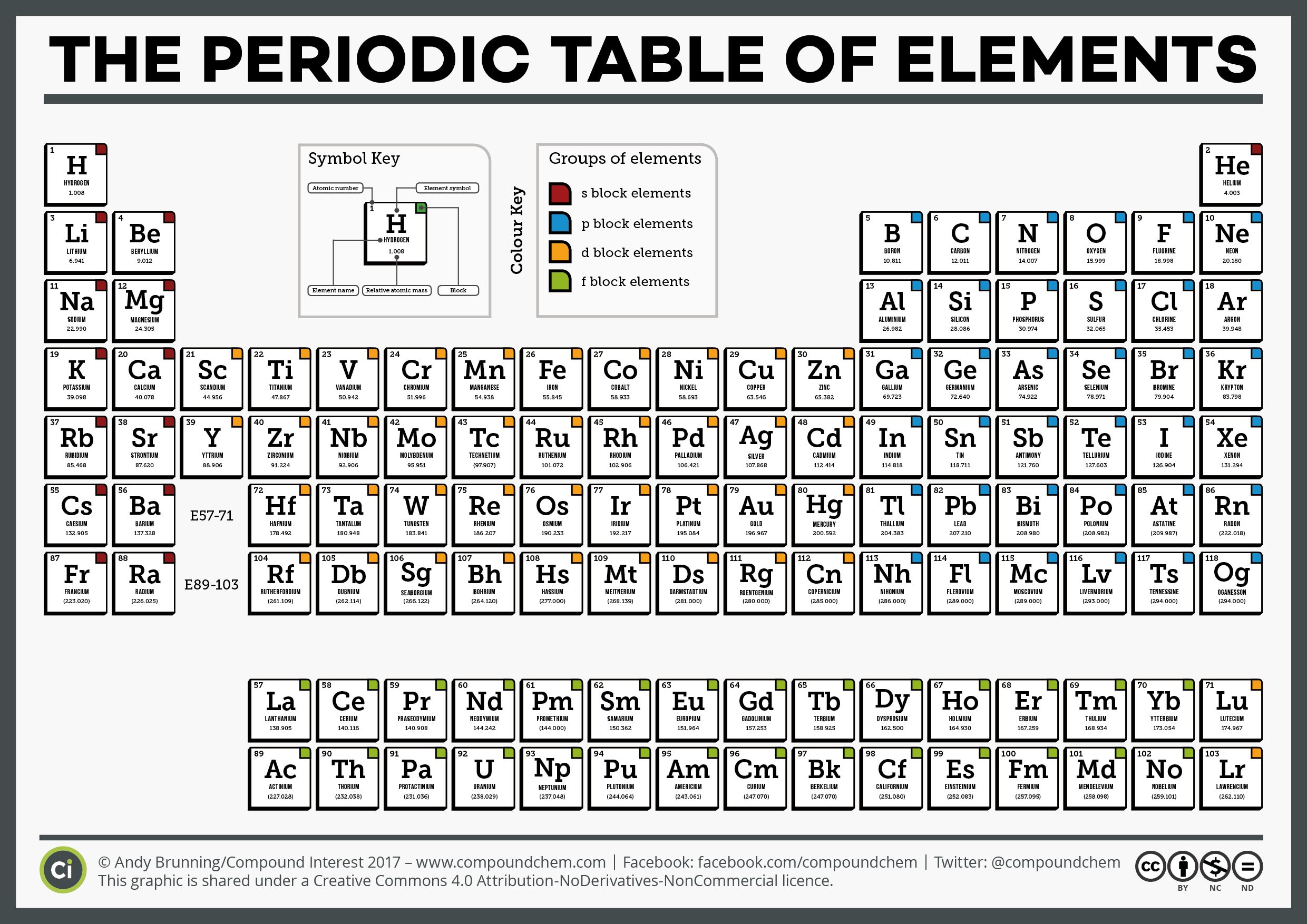
Something else that becomes apparent when looking at this table is that there’s been a tendency for element names to be derived from either the names of people or places more recently. One of the periodic table’s newest additions, nihonium (113) has also added Japanese to the languages from which element names are derived. Spanish might be the second most spoken language in the world, but only one element’s name (platinum) derives from it, putting it on a par with Gaelic, from which strontium’s name is derived, and Swedish (tungsten). German and English also pop up with a few contributions, whereas a number of the more recently discovered superheavy elements simply take their names from people they are named after. It’s clear looking at the table above that Greek and Latin dominate when it comes to the names of the elements. In other words, group 17 elements always end in -ine, group 18 elements always end in -on, and the rest must always end in -ium. In addition, more recently established rules state that names suggested for new elements must follow the established convention for each particular group of elements. (a) a mythological concept or character (including an astronomical object),īecause of these rules, public suggestions such as ‘lemmium’ and ‘elementy mcelementface’ were always going to miss out.

As stated in their release for the announcement of the proposed names yesterday, newly discovered elements can be named after the following: IUPAC (the International Union of Pure and Applied Chemistry) has specific rules about how elements can be named.

This graphic, featured in The Conversation, and produced in collaboration with Professor Mark Lorch of the University of Hull, takes a look at the origins of the names of all 118 elements! With yesterday’s announcement of the proposed names for the periodic table’s four newest members, the periodic table of elements will soon have a completed seventh period.


 0 kommentar(er)
0 kommentar(er)
